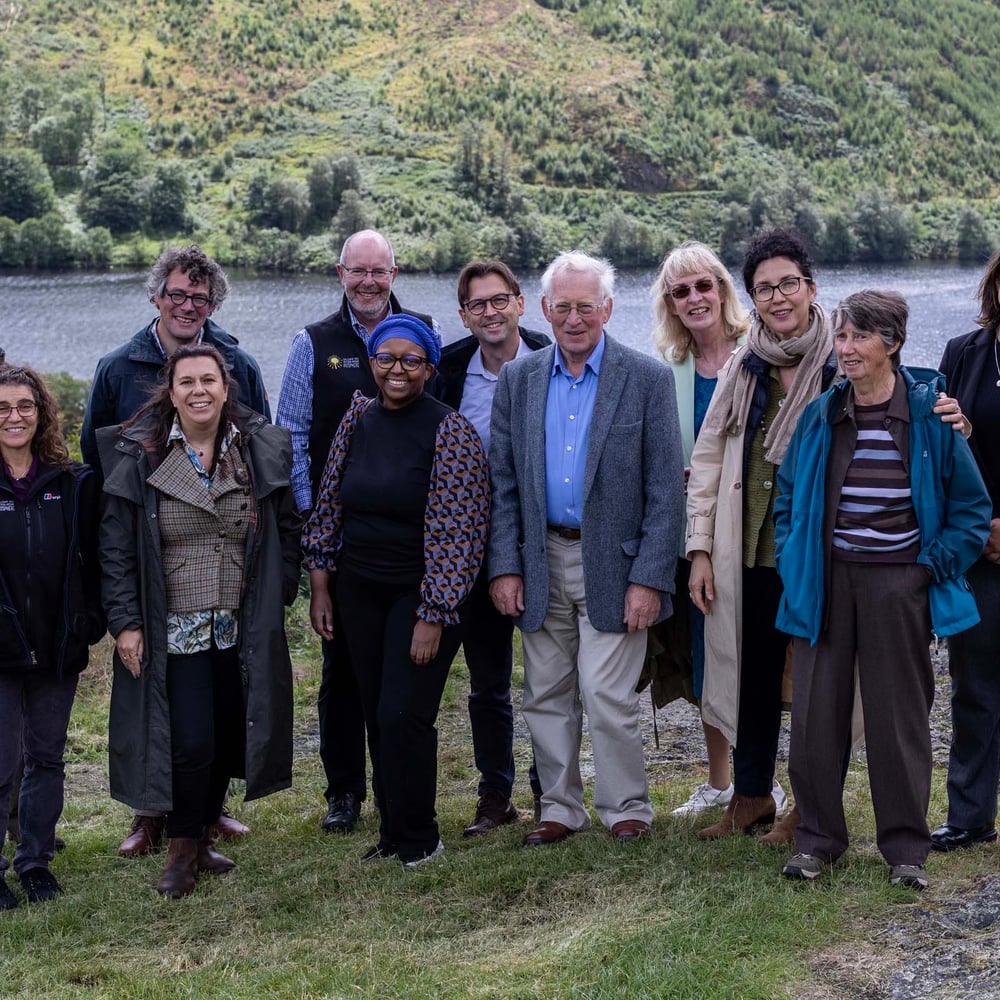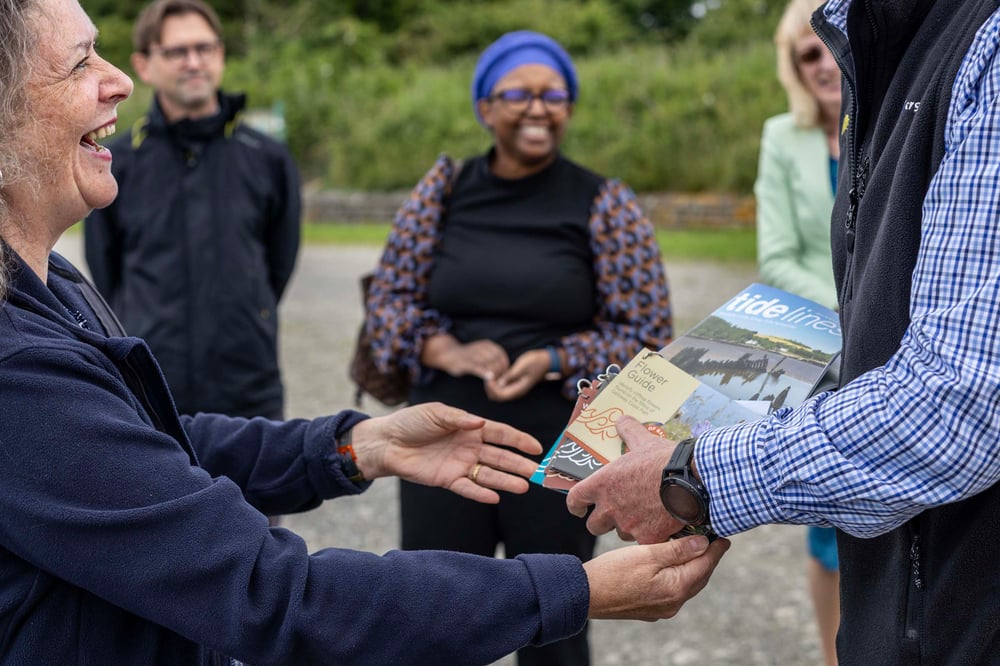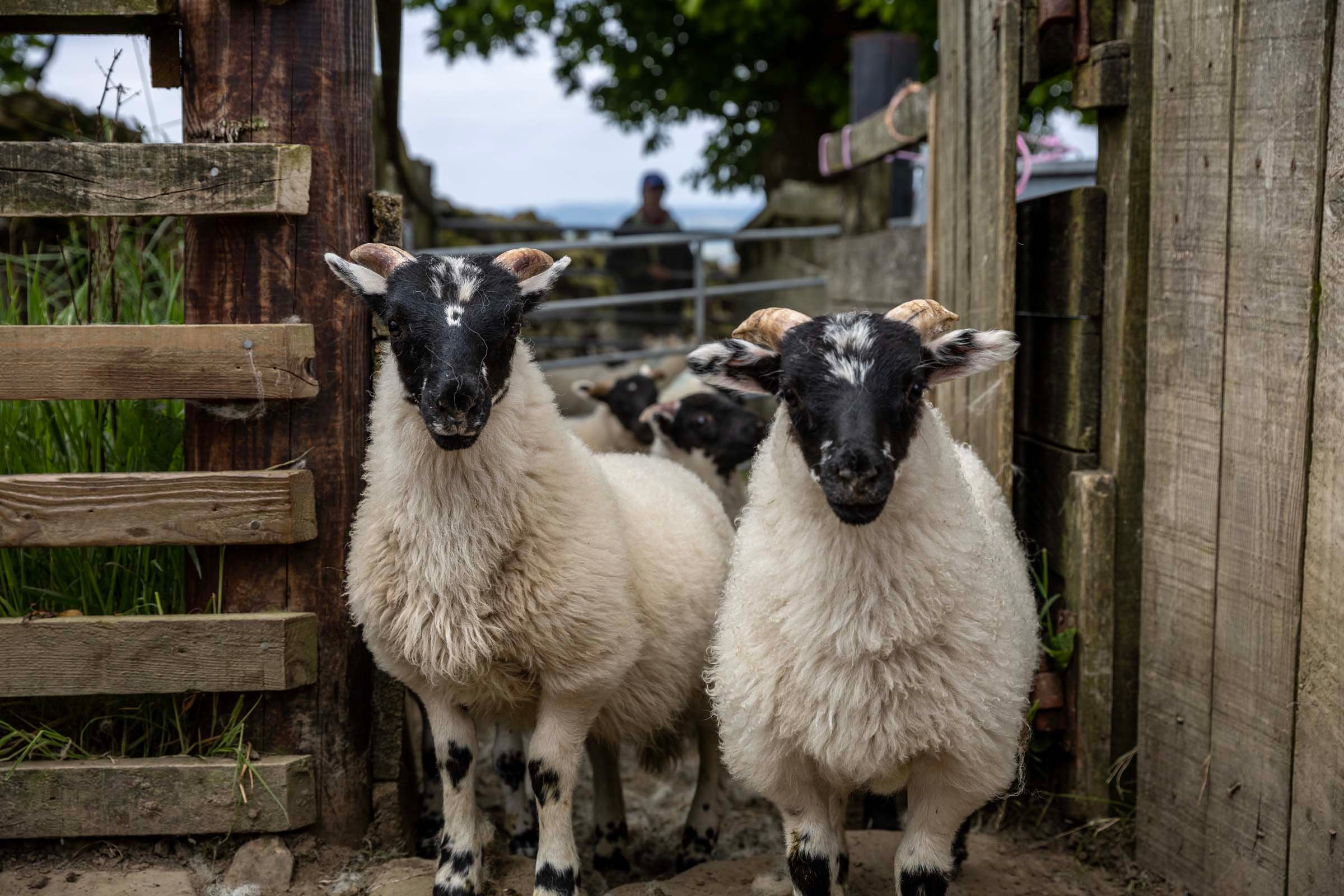
Global significance of Scotland’s first UNESCO Biosphere recognised through renewed designated status and boundary extension in tenth anniversary year
Office: UKNC – July 4, 2023
14 min read

Just over ten years since Galloway & Southern Ayrshire (GSA) was designated Scotland’s first UNESCO Biosphere, a global delegation of UN officials today (4 July) announced the renewal of the site’s UNESCO status for a further ten years, in recognition of its pioneering achievements in sustainable development and supporting global climate change goals. The revalidation reflects southwest Scotland’s world class natural heritage and the leading role the Biosphere plays in building a secure and greener economic future for Scotland and the UK.
Further highlighting the area’s global significance, the UNESCO delegation also revealed that the GSA Biosphere’s boundary will now be extended to incorporate Alloway (the home of Scotland’s national bard Robert Burns), the Rhins of Galloway (Scotland’s most southernly point) and 12 nautical miles of the marine environment. The site will grow from more than 5,200 km² to almost 9,800 km². This news has been welcomed by a myriad of community groups, conservationists, business leaders, landowners, farmers, schools, SOSE (South of Scotland Enterprise), local authorities, and other UK biospheres, who believe Galloway and Southern Ayrshire is “all the better – economically, socially, culturally, and environmentally – for being part of a UNESCO Biosphere.”*
Announcing the renewed status at a reception in Drumlanrig Castle on the Queensberry Estate in the heart of rural Dumfries and Galloway today, Meriem Bouamrane, Head of Research and Policy for the UNESCO Man and the Biosphere (MAB) Programme, based in Paris, said: “The Galloway and Southern Ayrshire Biosphere is an inspiring, internationally recognised place for living, which is reconciling conservation and sustainable use of biodiversity. We are absolutely delighted to announce today that we will be renewing its designated status for a further ten years, including an expansion of its geographical boundary.”
Professor Anne Anderson, Chair of the UK National Commission for UNESCO added: “Tackling the interconnected global challenges of our time – from the catastrophic impacts of drought, biodiversity loss, and flooding to the loss of traditional knowledge systems and gender inequality – requires everyone at the international, regional, and local levels to work together in new and unprecedented ways. The innovative work that has been done within Galloway and Southern Ayrshire Biosphere truly exemplifies the real difference that this collaborative approach can make.”
UNESCO’s Man and the Biosphere programme promotes a long-lasting connection between people and nature through over 740 designated sites across the world, including Yellowstone (USA), Niagara Escarpment (Canada), the Everglades (USA) and the Black Forest (Germany). National governments nominate Biospheres for UNESCO accreditation, which is then awarded by the Director-General of UNESCO following the decisions of the MAB international intergovernmental Coordinating Council (MAB ICC).
Welcoming the ICC’s decision to renew the Galloway and Southern Ayrshire Biosphere’s designation today, Anna Nsubuga, UK Ambassador and Permanent Delegate to UNESCO said: “Working closely with their local communities, the inspiring network of UNESCO Biospheres across the UK plays a vital role in supporting our national commitment to conserve our natural heritage and leave our environment in a better state than we found it. The Galloway and Southern Ayrshire Biosphere is a world-leading example of this, delivering pioneering work that is making a positive difference to the environment and to communities. I’m delighted that UNESCO’s International Coordinating Council has confirmed the well-deserved renewal and boundary extension today.”
Melanie Allen, Chair of the Galloway and Southern Ayrshire Biosphere, and business owner of the Biosphere Certified Nithbank Country Estate in Dumfries and Galloway, said: “On behalf of the Biosphere Partnership Board, I welcome the news of the revalidation of our precious designation. We are truly honoured to be recognised by UNESCO with an Ambassadorial visit to mark the occasion. The prominence of the visiting delegation really does speak volumes about the achievements and distinction of our organisation to date
“This is a significant milestone and excellent news for our communities, businesses and partners. Their continued dedication to the Biosphere unites us with a shared vision and passion for sustainable rural economic development, through best practice and partnership working. The groundbreaking work that has already been delivered in partnership with our dedicated Biosphere team is absolutely astounding. We can’t wait to see what the next ten years brings.”
Looking to the future, Galloway and Southern Ayrshire Biosphere Director, Ed Forrest said: “Our success to date is testament to the fantastic support we’ve had from partners, including residents, community groups, business leaders, land managers, schools, local authorities and South of Scotland Enterprise (SOSE). Our renewed and expanded UNESCO Biosphere designation will allow us to build on this and do so much more to support our vision for a just and equitable approach to life where people and the environment are both given equal consideration. The ultimate success of the Biosphere will be when people no longer think about the actions they have to do to achieve this balance, but rather do them automatically because they have become societal norms.”
In its first ten years, with funding from SOSE and three local authority partners, the Galloway and Southern Ayrshire Biosphere:
- championed sustainable development in the area’s seven river catchments, 110 Sites of Special Scientific Interest and 22 European designated sites, including: Silver Flowe, the most important patterned blanket bog in Britain; Cairnsmore of Fleet National Nature Reserve believed to be one of the wildest places in Scotland; and Merrick, identified by NatureScot as a nationally important Wild Land Area.
- launched the innovative Blackface Wool Project, supported by the Blackface Breeders’ Association and British Wool, to promote the versatility of local wool (an integral part of the local heritage and community) and its diverse potential as a sustainable resource.
- pioneered Biosphere Communities and the Biosphere Certification Mark, which recognise exemplars in local sustainable enterprise.
- launched the innovative Biosphere Footsteps Programme, which supports local residents to make positive environmental impacts while cutting domestic costs.
- played a key role in the development of Scotland’s award-winning UNESCO Trail – the first of its kind anywhere in the world – a network of thirteen UNESCO designations across Scotland including World Heritage Sites, Global Geoparks, Creative Cities and Biospheres.
- fostered international collaborations, including hosting colleagues from UNESCO Biospheres from around the world on learning journeys.
- launched a Learning for Sustainability Toolkit, to support the Scottish Government’s Curriculum for excellence, which is packed with ideas for teachers to use the region’s UNESCO Biosphere designation as a giant outdoor classroom, helping young learners connect with nature and better understand some of the most critical issues their generation will face.
- secured more that 400 businesses, organisations, schools and community groups as official Biosphere Proud Supporters.
- piloted groundbreaking Community Visioning workshops, which are part of a project involving the UK Commission for UNESCO, the GSA Biosphere and other UNESCO designations in Scotland. Led by the University of Manchester, the workshops bring together local residents, land managers and other stakeholders to look at specific area’s importance sustainability plans for the region as a whole. It is believed these could lead to a significant landscape restoration project.
- and much more.
Further explaining the significance of the Galloway and Southern Ayrshire at a global level, Meriem Bouamrane, Head of Research and Policy for the UNESCO Man and the Biosphere (MAB) said: “It was the first Biosphere site designated in Scotland in 2012 and is part of the World Network of Biosphere Reserves (748 sites in 134 countries) working together to reconcile humans within nature, in all ecosystems based on sound scientific and local knowledge and supporting economic activities respectful of the living.”
UNESCO Biosphere Reserves provide models for how people can live with nature and use resources for the well-being of people everywhere, through knowledge sharing, poverty reduction and human well-being improvements, respect for cultural values and society’s ability to cope with change. A participatory planning approach is at the heart of all Biosphere models. Indeed, the boundary extension proposals were only made following a public consultation conducted by the GSA Biosphere in 2021/22 which showed overwhelming support for the idea.
For more information about the Galloway and Southern Ayrshire UNESCO Biosphere, visit: gsabiosphere.org.uk
#ImageGallery





Share this via…


